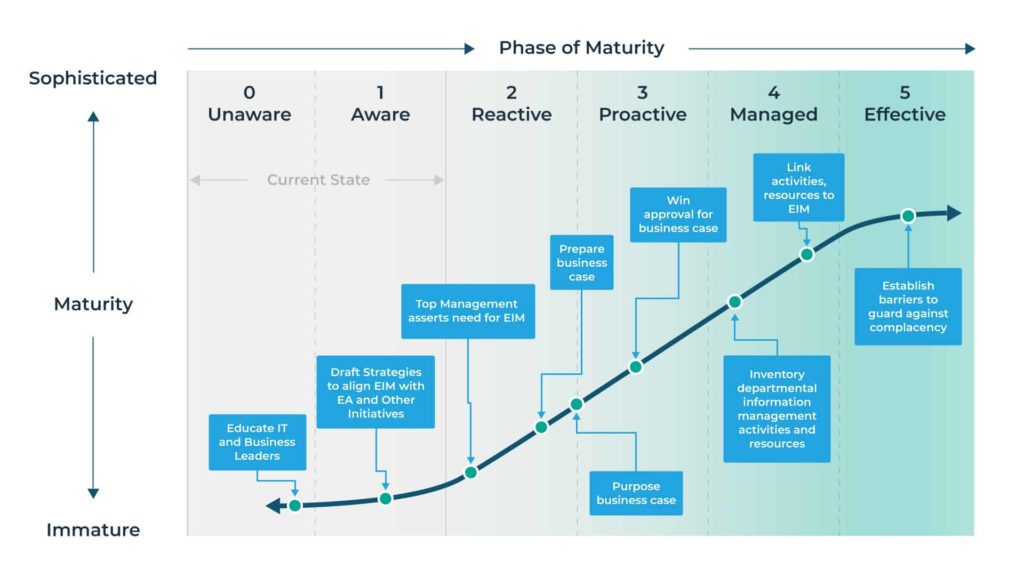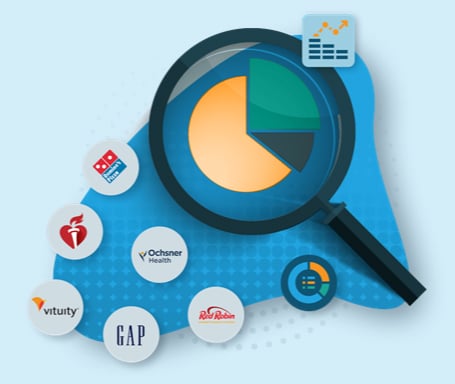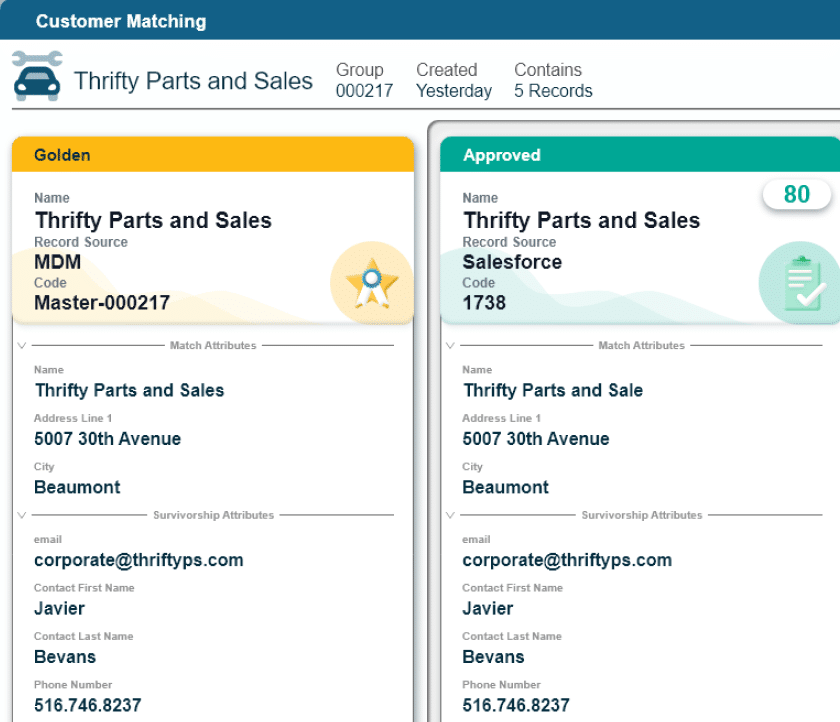Key Takeaways
A data governance maturity model helps organizations assess their current governance practices and create a clear roadmap for improvement, moving from ad hoc processes to fully integrated governance frameworks.
Maturity models transform data governance from a technical initiative into a company-wide strategy, improving data quality, security and compliance while securing executive buy-in and accountability across departments.
Organizations should choose a maturity model based on their business goals, industry requirements and level of executive support to ensure effective implementation.
Organizations looking to improve their data governance initiatives need a clear way to assess their current state and make progress. In such cases, a data governance maturity model can help provide a structured approach to evaluating and enhancing data governance capabilities over time. In this article, we’ll explore what exactly a data governance maturity model is and how it can help you drive better data practices and business outcomes.

Accelerate Microsoft Fabric Success
What is a Data Governance Maturity Model?
A data governance maturity model is a framework that helps organizations assess their current data governance practices and plan improvements. By measuring maturity levels, businesses can identify strengths, weaknesses and opportunities for growth. These models outline progressive stages of governance, typically ranging from ad hoc, unstructured approaches to fully integrated, business-driven governance frameworks.
A well-defined maturity model not only acts as a roadmap but also helps organizations communicate progress to stakeholders and align data governance efforts with business objectives. More importantly, it provides a benchmark against which organizations can compare their data governance initiatives, helping them focus their efforts on the most impactful areas.
A maturity model can help make data governance a business-wide strategy for improving data quality, security and usability — not just a technical initiative for the IT department. By assessing the maturity of data governance, organizations can determine how effectively their data policies, roles and processes are working and make informed decisions about improvements.
How to Use a Data Governance Maturity Model
Using a maturity model effectively requires a systematic approach:
- Assess Your Current State: Identify where your organization stands within the model’s defined stages. Conducting surveys, audits and interviews with key stakeholders can help establish a baseline.
- Define Your Target Maturity Level: Determine the level of governance maturity that aligns with your business and compliance goals. Organizations in highly regulated industries, for instance, may need to aim for higher maturity levels sooner.
- Develop an Action Plan: Create a structured roadmap to move from your current state to your desired maturity level. Prioritize actions based on business impact and available resources.
- Monitor Progress: Continuously evaluate improvements and adjust strategies as needed to ensure sustainable growth. Use metrics such as data accuracy, compliance adherence and governance adoption rates to track success.
- Communicate with Stakeholders: Use the model to demonstrate progress and secure ongoing executive support. Transparent reporting ensures that governance remains a priority across all departments.
Types of Data Governance Maturity Models
Different organizations use different models, but a commonly recognized example is Gartner’s Enterprise Information Management (EIM) maturity model. This model outlines five key phases:
| Level | Indicators |
|---|---|
| Phase 0: Unaware | Organizations lack awareness of data governance and its benefits. There may be skepticism and no formal governance efforts. Typically, there are no established policies, and data is managed inconsistently across different teams. |
| Phase 1: Aware | Organizations recognize the need for data governance but lack ownership, sponsorship and formal policies. At this stage, there is often scattered governance activity, but it is not yet structured or standardized. |
| Phases 2-3: Reactive & Proactive | Governance efforts become more structured, with defined policies, data ownership and governance teams emerging. In the reactive phase, organizations address governance issues as they arise, while in the proactive phase, they take preemptive steps to mitigate data risks and ensure data quality. |
| Phases 4-5: Managed & Effective | Data governance is fully integrated into business processes, with comprehensive policies guiding data management and continuous improvement. Governance is embedded in corporate culture, and data quality is actively maintained to support business intelligence and analytics. |

While this model provides a structured approach, organizations may also use industry-specific or custom models that align with their unique needs. Other widely used models include the Data Management Maturity (DMM) Model by the CMMI Institute, the Data Management Body of Knowledge from DAMA (the DAMA-DMBoK®) and the Information Governance Maturity Model from ARMA International.
How to Pick the Right Maturity Model
Maturity models are not one-size-fits-all. To choose the right one for your organization, consider your business goals, preferred level of complexity, need for customization and state of executive buy-in.
Companies in different industries and with different business models will have varying governance needs. Smaller organizations may prefer a less complex model that’s easier to implement than what a larger organization would. Organizations of all shapes and sizes will have varying degrees of executive sponsorship and need for customization.
Consider, too, training. Some organizations offer classroom-style training for their maturity models for data management professionals to get certified by the people most familiar with the models. These models tend to be more complex and provide more step-by-step instruction than others, so they may be better suited to larger organizations.
Why Use a Data Governance Maturity Model?
There are many reasons why you should consider using a data governance maturity model. Rather than just being a theoretical framework, a maturity model is a practical tool that delivers real benefits, including:
- Clear Roadmap for Improvement: Maturity models help organizations systematically enhance data governance capabilities by breaking the journey into manageable stages.
- Stronger Executive Buy-In: Maturity models can help you demonstrate progress and secure leadership support. They make governance success tangible, helping to justify continued investment in data governance and good data management practices in general.
- Improved Compliance and Risk Management: Especially in the case of industry-specific data governance maturity models, maturity models can help ensure data governance aligns with regulatory requirements, reducing the risk of non-compliance penalties and lowering the company’s overall risk profile.
- Better Data Quality and Decision-Making: Maturity models supports trustworthy, business-ready data, which enhances analytics, reporting and operational efficiency and enables strategic data initiatives like AI.
- Cultural Change and Accountability: Maturity models encourages organizations across the business to embed data governance into daily operations by demonstrating its real value and tying it back to their processes. This turns data management into a shared responsibility rather than an isolated function of IT, making for a higher chance of success for a governance initiative.
- Operational Efficiency: A mature data governance framework reduces redundant data processes, improves data accessibility and enhances cross-departmental collaboration. A data governance maturity model is an important tool for working toward and gauging framework maturity.
A well-implemented maturity model also helps organizations adapt to new regulations and data management challenges over time. Rather than reacting to data issues as they arise, businesses with mature governance models proactively mitigate risks, ensuring long-term sustainability.
Plan, Execute and Refine
A data governance maturity model provides structure, clarity and direction for organizations looking to improve their data governance programs. By understanding where you are today and where you need to go, you can build a strong, sustainable governance framework that drives better business outcomes.
Whether using Gartner’s model or another framework, the key is to assess, plan, execute and refine — because data governance maturity is an ongoing process, not a final destination. By continuously improving governance capabilities, organizations can enhance data quality, drive regulatory compliance and unlock the full potential of their data assets.
Deepen Your Data Governance Knowledge

Forrest Brown
Forrest Brown is the Content Marketing Manager at Profisee and has been writing about B2B tech for eight years, spanning software categories like project management, enterprise resource planning (ERP) and now master data management (MDM). When he's not at work, Forrest enjoys playing music, writing and exploring the Atlanta food scene.











